Over the course of the past week, I was able to examine four different picture books and four different board books at my local library. Here are my thoughts:
1. Lê, M. (2018). Drawn together (D. Santat, ill.). Disney-Hyperion.
Drawn Together portrays the story of a grandson and his grandfather attempting to connect even though they don't speak the same language. Because of the language barrier, the author & illustrator have chosen not to include any dialogue except for two short, failed, attempts at communicating (below).


You can tell neither is thrilled to be saddled with this person that they have nothing in common with. The dull backgrounds and lackluster expressions speak volumes without a single word in the frame. Until something changes. The grandson pulls out his sketchbook and begins to draw, and the grandfather sees a connection point. Though the grandson is using markers and colored pencils, and the grandfather uses a calligraphy pen, they meet in the middle of a world of visual art and their styles, though different, flow together seamlessly.
Dan Santat uses the black and white calligraphy style of the grandfather to represent tradition and maturity both in his art and himself. On the opposite side of the page, Santat uses bright colors and an almost comic-book-type- feel to represent youth and new ideas in the grandson. However, they can only coexist without empathy for so long, they begin to feel the cultural and generational separation once more. Only by stepping into the shoes (or in this case, picking up the pen) of the other, can they close the distance and create incredible art once again.
.


The illustrations convey the journey from conflict to unity in the combining of fine lines in the grandfather's art with the bright splashes of color from the son's until they create an intense world that practically leaps off the page. In the finale of their time on the page together, readers can see the grandfather drawn in fine lines but colored in the style of the grandson, and the grandson is drawn with larger flatter shapes, but is black and white like his grandfather's art, the colors and calligraphy combine to create an enticing scene that readers will want to jump into.

2. Lies, B. (2018). The rough patch. Greenwillow Books.
The introduction readers receive to the world of The Rough Patch (post-cover) is an immediate two page spread showing Evan (the fox) and his dog gardening in a beautiful suburban dream with a white fence, a blue sky, and shadows directly beneath them showing us that it is somewhere around midday and tending to the garden is the only thing on the agenda.
A After a series of images of Evan working on his garden with his trusty companion, readers get absolutely blindsided by potentially one of the saddest frames I've ever seen in a children's book.


The stark emptiness of the white background is a shock to the system after multiple pages of beautiful watercolor. You mourn the loss of the sweet pet right along with Evan. The illustrations shift into much darker tones filled with nostalgia as Evan loses interest in the things he used to love. The dark shift goes further as Evan not only abandons his garden, but then actively cultivates the weeds and other harsh plants instead of growing the beautiful things he once did. This corruption of what once was beautiful is a poignant picture of how wonderful things can so easily turn sour.
Not only do the plants turn dark and jagged, but the sky itself sours into a sickish yellow color to match Evan's despair. Finally, one persistent pumpkin vine creeps its way into the garden, and Evan allows it to grow. As Evan begins to focus on the one joyous thing in that garden, however small it may be, he begins to remember his love of gardening.
The garden is bright and lovely once more, but Evan is still shrouded in darkness.
It is not until he goes back to the fair and interacts with his friends and is reminded of the things he once loved that he is once more in the light. When Evan wins third place with his beautiful pumpkin, he has his pick of 10 dollars, or a small puppy. He is hesitant at first, like many of us are at the prospect of opening up to another after one we loved has left us, but in the end, Evan has a new friend, and new hope.
This is a heavy theme, but one that everyone experiences. The metaphor of the garden going from something beautiful to something hurtful as so many pastimes, places, and things do when we lose someone we love, is so strong in the illustrations of this book. It conveys a beautiful message that it is okay to grieve, and be messy, and sometimes something will hurt so badly, but it is possible to go forward from that and hurtful things can become beautiful once more, especially when you have someone to share it with.
3. Lyons, K. S., & Minter, D. (2019). Going down home with daddy. Peachtree Atlanta.
Going Down Home with Daddy is a beautiful exploration of family ties and generational growth. The colors alternate back and forth between cool blues and rich, warm oranges. The illustrations sharing a cohesive watercolor with an almost tie-dye look across the pages.
On each page there is an overlay of symbols. At first, they look like hearts on each page but upon closer inspection, "Readers familiar with West African adinkra symbols will recognize these heart-shaped patterns as Sankofa, an adinkra that means 'learn from the past' or 'go back and get it.'" (Martin 2019).
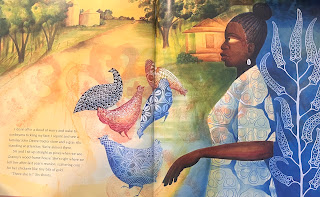

On some of the pages, the symbols fade into the background, whereas on other pages they almost overtake the main illustration. It conveys a sense of continuity and emotion throughout the whole story as "Lil Alan" attempts to find something that he can share to celebrate 75 years of his family owning their farm.
His cousins all seem to have something to share be it a song, a poem, or a craft, but Lil Alan can't seem to find that perfect thing to sum up his family's legacy. Until he begins exploring the farm, and reliving the memories of growing up here, as he begins having these realizations, he knows what he wants to share.
And the colors explode on the page! As Lil Alan shares the cotton grown in the fields, and pecans from the trees, and dirt from the ground, he talks about the rich memories built on that farm and motifs from each of those experiences that the reader has seen earlier in the book surround him and join together on one page to create a beautiful visual cacophony.
Throughout the book, readers are privy to a host of multi-layered watercolor illustrations that pay tribute to both the traditions of West Africa, and the histories of Americans that have roots there, but have grown here tall and strong and proud.
1. Martin, M. (2019, October 9). Going down home with daddy. The Horn Book. https://www.hbook.com/story/going-down-home-with-daddy
4. Martinez-Neal, A. (2018). Alma and how she got her name. Candlewick Press.
The illustration style of this book does not see much transformation as the story progresses, but what DOES change, is spacing, distance, and perspective of little Alma. At the beginning of the story, Alma is very isolated, she believes that her name is too long, and it doesn't fit (on the page as well as within her). So, her father agrees to tell her the story of how she got her name.
She begins the tale hesitant, looking at photos of her ancestors as just that, photos of people long ago. But as the stories progress, she begins to see traits that she has inherited from these people along with their name. Things like loving to read, or wanting to travel, as the people become more real, we see her become engulfed in their stories.
Soon, Alma is interacting with her family members...
... and participating in their causes.
The past starts to have more color to Alma, she starts identifying with these former strangers and realizes that she doesn't have just a long dull, name, she has a history.
The next time we see Alma's full name, it has color and character and life! Alma is proud of her name and is excited to get to pass down her name someday as is evidenced by the historical photo ready and waiting for the next generation.
Board Books
Becker, A. (2020). My favorite color. Candlewick Studio, an imprint of Candlewick Press.
The first board book I looked at is a book of colors by Aaron Becker. The author uses swatches from all over the rainbow to try to pinpoint what his favorite color is. It is very difficult for him because he loves all of them for different reasons.
I think this one is effective not only because of the many shades which can inspire a conversation about where we see each shade/color most often ("ooh that's the red of a stop sign, that's the blue of the sky but over here is the blue of your pillowcase!") but it also has little windows in each page through which the light can shine, making the colors take on an entirely new shade.
Boynton, S. (2023). One, two, three!: A happy counting book. Boynton Bookworks, an imprint of Simon & Schuster Children’s Publishing Division.
The next board book I read was a charming counting book by Sandra Boynton. The illustrations contain a cast of characters exploring each number as groups of friends and what they can do together.
Although the premise is sweet, the concepts were not very specific, after all one can have a race, perform a play, or be in a ballet class with any number of people.
Hegarty, P., & Macon, S. (2024). ABCs of love for dad. Rodale Kids.

Next was an alphabet book portraying many different animals and their fathers with each letter representing something there is to love about dads. While this is a great read for a Father's Day event or perhaps a family-based display, I would caution against using it in Storytimes as we don't always know what a library kid's family situation might be.
Wade, S. (2018). Under the Sea: A Touch and Feel Book . Little Hippo Books.
Finally, I looked at a touch and feel book based on sea creatures. Every other page had different sea creatures with their defining characteristics listed.
The bright colors on each page are perfect for audiences of this age, and I'm sure they will love feeling the squiggles and bumps and scales of the sea creatures.


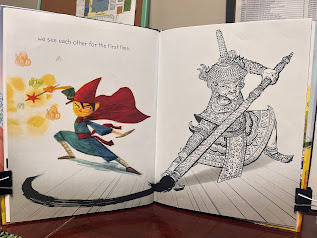




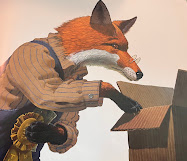




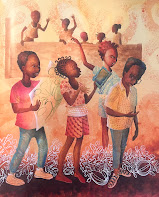

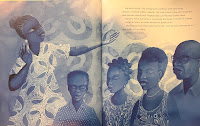








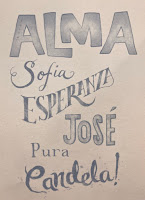

































Thoughtful and thorough commentary on this week's books! Your challenge will be to use the formal review assignment matrix to boil the reviews down to the most important points. The word limit for the formal reviews is 250, while these range 350-450. But I always think its better to start broad and refine the work than try to add after the fact.
ReplyDelete